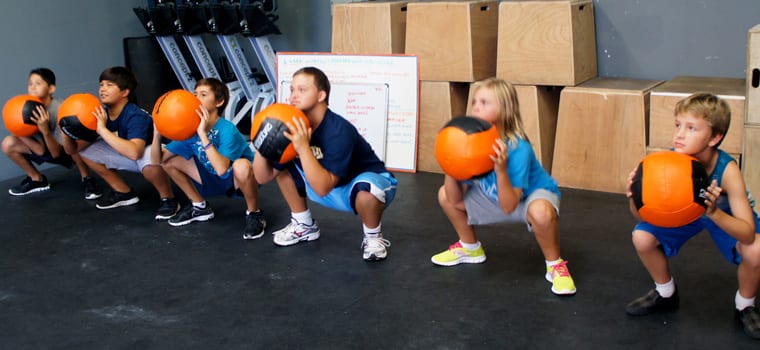[ad_1]
This week in the world of sports science, here’s what happened…
- Predicted fitness trends for 2025
- Is strength training important for youth football players?
- Is it necessary for a sports scientist to have played a sport to understand it?
Predicted fitness trends for 2025

At the conclusion of each year, the American College of Sports Medicine (ACSM) publishes the top predicted fitness trends for the upcoming year. The projections for 2025 have been released.
As we approach 2025, wearable technology continues to lead as the foremost fitness trend. While this technology is consistently evolving and has the potential to support positive lifestyle behaviour changes, the ACSM warns that exercise professionals should be aware of the concerns regarding the validity, reliability, and privacy of these devices.
Mobile exercise apps are ranked as the second most significant predicted trend, having experienced rapid growth; they were ranked 20th in the 2023 report. Most apps now offer flexible and easily accessible fitness programs and may pose a substantial threat to the traditional role of exercise professionals in the near future.
Fitness programming for older adults occupies the third position in the rankings. An increasing number of older adults recognise the importance of regular physical activity for overall health, disease prevention, and enhanced quality of life. Therefore, exercise professionals must improve their skillset to serve this demographic.
The trends of exercise for weight loss and traditional strength training complete the top five predictions. While youth athletic development, outdoor fitness activities, personal training, and lifestyle medicine are also included among the top 20 trends, they have seen a decline in popularity compared to previous years.
It is crucial for exercise professionals to stay informed about evolving trends in order to identify emerging opportunities, threats, and challenges. If you want to take a more in-depth look at the predicted trends for 2025, the report can be accessed here.
Is strength training important for youth football players?

A recent study has underscored the critical importance of strength training for youth athletes. One of the noteworthy aspects of the study was the substantial duration of the intervention. The research focused on the effects of strength training for one year among elite football players aged 12 to 15 years.
The participants were divided into two distinct groups: a strength training group and a control group. Both groups engaged in football training four times per week throughout the year. However, the strength training group supplemented their routine with two additional 30-minute weekly strength training sessions.
The findings revealed that the strength training group exhibited significant improvement in maximum strength, as quantified by a one-repetition maximum test in both the front and back squat. Furthermore, there were notable enhancements in lower body power, assessed through countermovement and squat jump performance, as well as improvements in linear speed, measured by sprint times over distances of 5, 10, and 30 meters.
This study contributes to the expanding body of evidence supporting the significance of strength training for athletic development and sporting performance among youth. It is imperative that strength training be prioritised within long-term athletic development programs. For further information regarding long-term athletic development, please refer to our course: Long-Term Athletic Development
Is it necessary for a sports scientist to have played a sport to understand it?

In the previous month, former professional footballer Jamie Lawrence garnered significant attention through his remarks directed at sports scientists in an Instagram post. Lawrence expressed, using strong language, that one cannot hold the position of a sports scientist at a football club without having played the game at a high level.
He argues that different positions in football have varying running requirements, suggesting that sports scientists do not fully grasp this concept. While he acknowledged the importance of sports science for recovery purposes, he paradoxically criticised the current focus on training “loads,” noting that even parents are discussing their children’s training “loads.”
This post has raised concern among sports scientists, as it has attracted over 20,000 views within its first day of being posted, with many comments expressing support for Lawrence’s perspective. Thankfully, the majority recognise the crucial role that sports scientists play within sports teams. This incident underscores a prevailing lack of understanding from some, regarding the significant advantages that sports scientists contribute to team performance. Consequently, this situation highlights the need for enhanced education on the roles and advantages that sports scientists offer, rather than allowing for further misguided commentary from individuals like Lawrence to gain traction.
So, yes, it is absolutely possible to be an excellent sports scientist and a key part of the team without having played the sport at a high level. In fact, many leading sports scientists have never played the sport yet have developed a deep understanding of the physiological requirements for it. Also, I’m sure a sports scientist understands that different positions in football have different requirements! You don’t have to play for Man City or Real Madrid to see that!
From us this week:
>> New course: S&C For Football
>> New podcast: Inside the NFL’s Concussion Protocols
>> New infographic: The Transfer Of Medicine Ball Exercises To Throwing In Baseball
>> New article: Hydrotherapy
Access to a growing library of sports science courses
SFS Academy is an all-access membership to premium sports science education.
With SFS Academy, you’ll learn from some of the best coaches around the world as they teach you how to apply the latest research and practice with your athletes.
The post What’s Going To Be Big In 2025?! appeared first on Science for Sport.
[ad_2]
Source link


